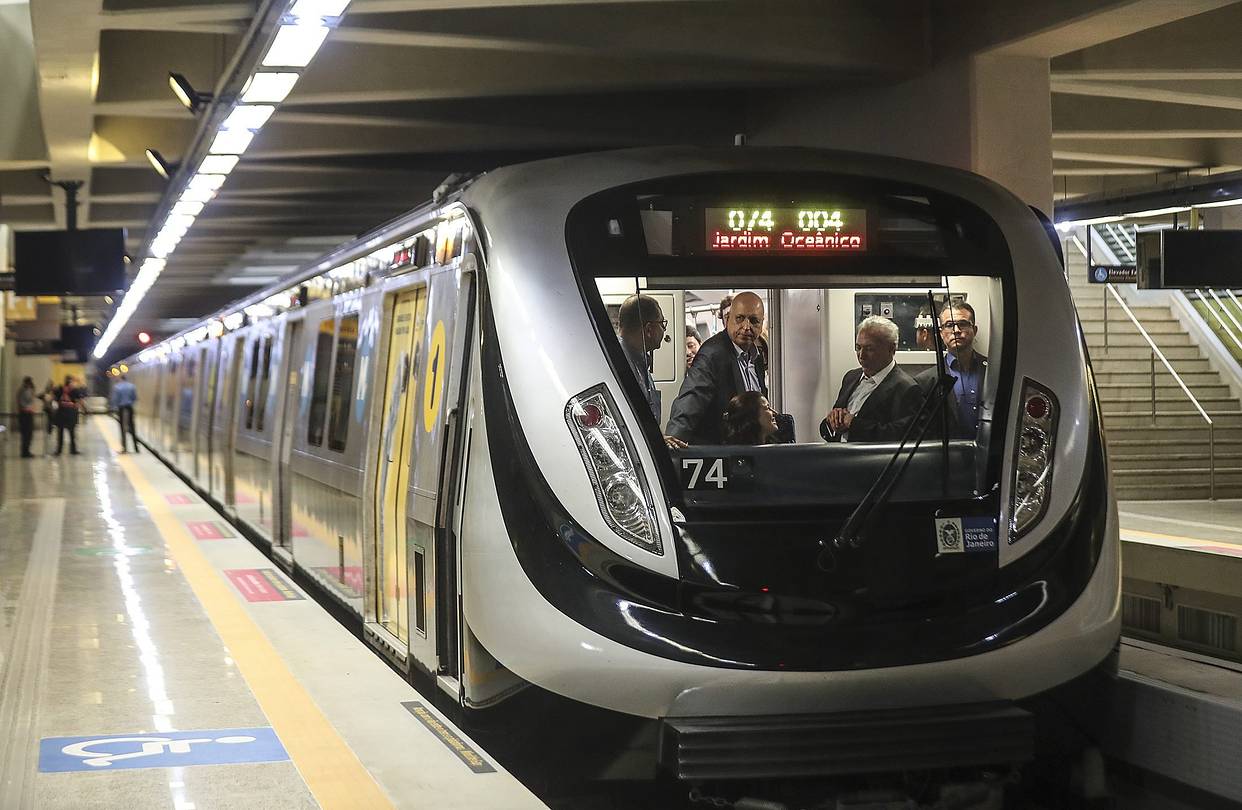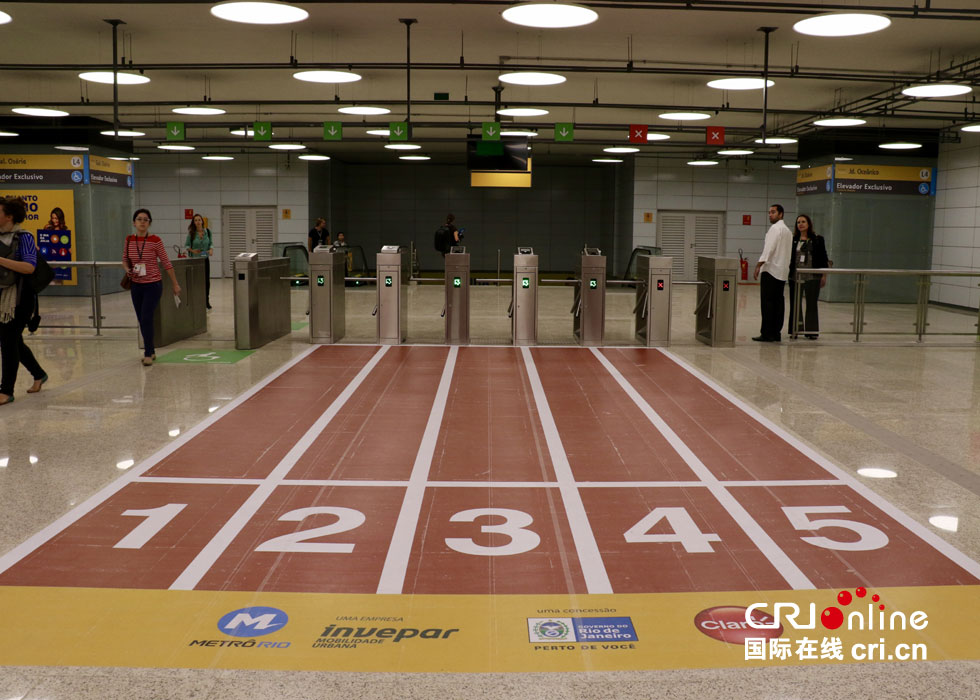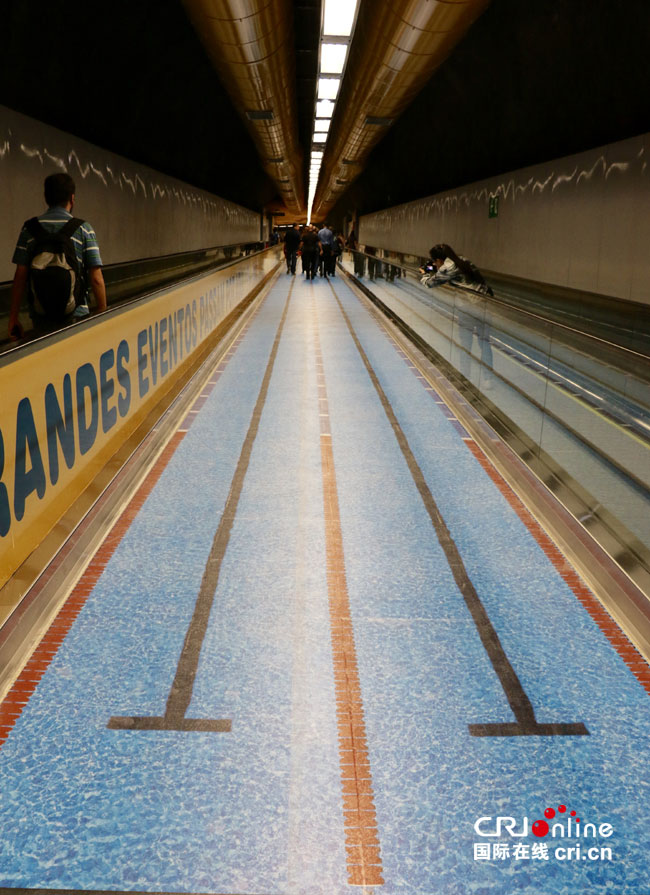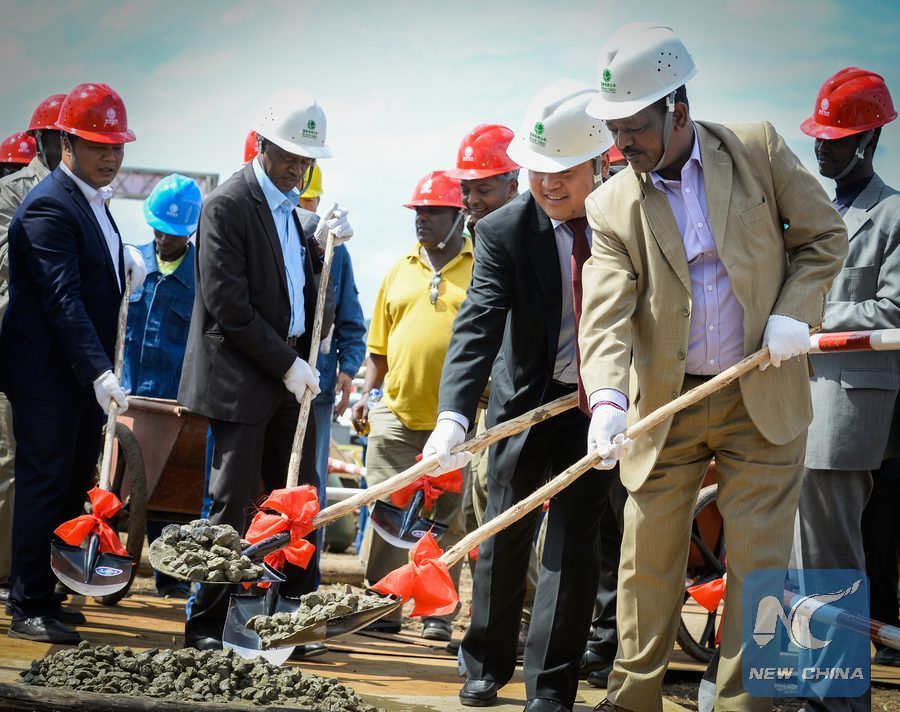TaiShang
ELITE MEMBER

- Joined
- Apr 30, 2014
- Messages
- 27,848
- Reaction score
- 70
- Country
- Location
Brazil inaugurates new subway line ahead of Rio Olympics
Source: Xinhua | July 31, 2016, Sunday |

Brazil's interim President Michel Temer (R, front) attends the inauguration ceremony held at the Jardim Oceacino station of metro line 4 in Barra da Tijuca, in Rio de Janeiro, Brazil, on July 30, 2016. The inauguration ceremony of metro line 4 was held in Barra da Tijuca on Saturday.
BRAZIL'S interim president, Michel Temer, on Saturday inaugurated a much-anticipated subway line in Rio de Janeiro, just days before the city hosts the 2016 Olympic Games.
Rio's new metro Line 4, which will be one of the main enduring legacy's of the Games, links the city's tourism district with the western Barra da Tijuca neighborhood, where many of the Olympic events are slated to take place.
Olympic organizers had been concerned the new 16-kilometer line would not be ready in time for the opening ceremony on Aug. 5, as construction was plagued by constant delays, leading to critical congestion on city streets.
"The Olympic Games represented an excuse to improve all of Rio de Janeiro," Temer told those gathered at the inauguration of the six-stop line which is expected to serve more than 300,000 passengers a day.
During the Olympics and Paralympics, the line will be reserved for the exclusive use of the "Olympic family," officials said, meaning athletes, organizers, and others with special access.
The key Olympic transport line features China-made trains designed and manufactured by the Changchun Railway Vehicles Co., a subsidiary of CRRC, one of China's biggest train makers.
The Chinese company is set to operate the system for the duration of the Games to ensure everything goes smoothly.
Chinese trains have already run on the city's Line 1 and Line 2.
Earlier this month, Rio State Transportation Secretary Rodrigo Vieira told Xinhua, "Line 4 will contribute to making the Rio Olympic Games the best in history and will become an important legacy for the city, improving the quality of life of the people who live here."
Also attending Saturday's inauguration ceremony were Finance Minister Henrique Meirelles, Sports Minister Leonardo Picciani, Rio de Janeiro State Gov. Francisco Dornelles, Rio Mayor Eduardo Paes, and the president of the International Olympic Committee (IOC), Thomas Bach.
The construction of the line began in 2010.
Source: Xinhua | July 31, 2016, Sunday |

Brazil's interim President Michel Temer (R, front) attends the inauguration ceremony held at the Jardim Oceacino station of metro line 4 in Barra da Tijuca, in Rio de Janeiro, Brazil, on July 30, 2016. The inauguration ceremony of metro line 4 was held in Barra da Tijuca on Saturday.
BRAZIL'S interim president, Michel Temer, on Saturday inaugurated a much-anticipated subway line in Rio de Janeiro, just days before the city hosts the 2016 Olympic Games.
Rio's new metro Line 4, which will be one of the main enduring legacy's of the Games, links the city's tourism district with the western Barra da Tijuca neighborhood, where many of the Olympic events are slated to take place.
Olympic organizers had been concerned the new 16-kilometer line would not be ready in time for the opening ceremony on Aug. 5, as construction was plagued by constant delays, leading to critical congestion on city streets.
"The Olympic Games represented an excuse to improve all of Rio de Janeiro," Temer told those gathered at the inauguration of the six-stop line which is expected to serve more than 300,000 passengers a day.
During the Olympics and Paralympics, the line will be reserved for the exclusive use of the "Olympic family," officials said, meaning athletes, organizers, and others with special access.
The key Olympic transport line features China-made trains designed and manufactured by the Changchun Railway Vehicles Co., a subsidiary of CRRC, one of China's biggest train makers.
The Chinese company is set to operate the system for the duration of the Games to ensure everything goes smoothly.
Chinese trains have already run on the city's Line 1 and Line 2.
Earlier this month, Rio State Transportation Secretary Rodrigo Vieira told Xinhua, "Line 4 will contribute to making the Rio Olympic Games the best in history and will become an important legacy for the city, improving the quality of life of the people who live here."
Also attending Saturday's inauguration ceremony were Finance Minister Henrique Meirelles, Sports Minister Leonardo Picciani, Rio de Janeiro State Gov. Francisco Dornelles, Rio Mayor Eduardo Paes, and the president of the International Olympic Committee (IOC), Thomas Bach.
The construction of the line began in 2010.













